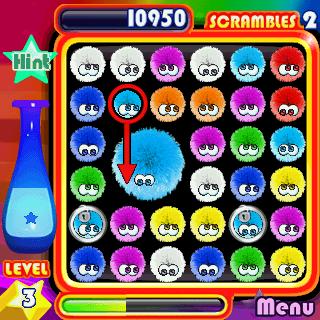
Athabasca University | AU Student/Staff Login | Invited Guest Login
- Blogs
- Colin Pinnell
- Theory of Fun
Theory of Fun
Amidst studying for my last final, I have been thinking about the video game I was planning on writing in my last blog post. I don't want it to be very big, or very complicated - I want something that someone could play on their phone or tablet, or in the corner of their computer screen. However, I also want it to be fun! This has gotten me thinking about what "fun" is exactly. What is it about Tetris that made it so addictive in the 80s and 90s, why is it that my old roommate could play Chuzzles for hours upon end?
Matching games, fitting games, all of these have been around a very long time. But what's fun about them? The tasks are mind-numbingly simple, after all. I've given it a bit of thought and want to present some ideas. This is not only to get opinions from anyone interested, but also just to help clarify things in my own head. So! Some Factors of Fun include:
- Searching a bounded search space. All of these games have the player looking for something - maching coloured gems, finding a fitting orientation of blocks. The search space is bounded at least partially, as in there are a limited number of options - there are only so many game pieces that can go together in so many different ways.
- Multiple solutions. Usually there's more than one "right" answer to a given move in the game, but different options can vary in how optimal they are. You may choose a sub-optimal move, but it won't end the game unless you make too many of these moves.
- Numerous, small choices. A move in any of these games is a single choice, and normally the game rewards you in a number of ways once you make your move. You might get some pretty graphics and a rewarding chiming sound, or maybe some fun animations, or at the very least you're going to get a new puzzle in the form of a new move to make.
- Multiple levels of problem and reward. A move in a game is made through tactical choice amongst specific factors - choosing to use the line block in order to fill a wide gap instead of standing up, for example. This is one level of problem. The second level of problem is the strategic level, in which the player plans a strategy of how to build. The player might build up one side deeply while leaving gaps for line blocks, or might try to build as compactly and completely as possible instead. Solving the smaller puzzles gives smaller rewards in the form of new blocks to place. Solving the larger puzzle gives a larger reward, an entirely new level to play.
- Weak, successive punishment for sub-optimal choices. Choosing less-than-optimal choices doesn't end the game, but makes success more difficult. This allows a player to correct for previous mistakes and learn from them.
There are certainly more, but I'll leave the list of factors there. I'd like to point out that fun itself is terribly vague as a term - what defines fun?. I suspect that it has a lot to do with being able to apply creativity to a problem in order to come up with solutions, but that's a guess, and probably best dealt with in another post.
Tag cloud
Welcome to the Landing
The Landing is a social site for Athabasca University staff, students and invited guests. It is a space where they can share, communicate and connect with anyone or everyone.
Unless you are logged in, you will only be able to see the fraction of posts on the site that have been made public. Right now you are not logged in.
If you have an Athabasca University login ID, use your standard username and password to access this site.
Adding comments to this site
We welcome comments on public posts from members of the public. Please note, however, that all comments made on public posts must be moderated by their owners before they become visible on the site. The owner of the post (and no one else) has to do that.
If you want the full range of features and you have a login ID, log in using the links at the top of the page or at https://landing.athabascau.ca/login (logins are secure and encrypted)
Disclaimer
Posts made here are the responsibility of their owners and may not reflect the views of Athabasca University.


